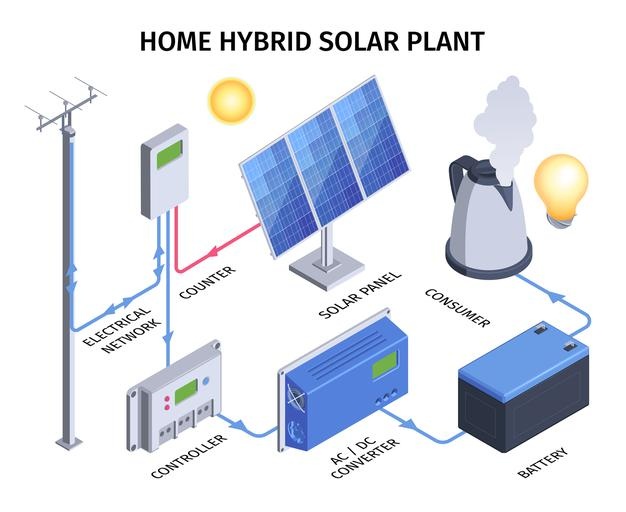Residential solar has seen a marked increase in installations over the last decade, but that growth pales in comparison to the growth of the power storage sector of the solar market. A huge percentage of solar power systems being installed today now include solar power storage. Solar batteries are more affordable, efficient, and compact than before, making them a more viable choice for most homeowners. But what if you installed a grid-tied system several years ago? Is it possible to jump on this bandwagon and add batteries to make your system a hybrid one? Keep reading to learn more.
It’s Not So Simple
If you think you can just plug some solar batteries into your grid-tied solar inverter, think again. Grid-tied inverters work differently from hybrid and off-grid inverters, and they’re not designed to support backup power. This means that, in order to convert your system and allow it to support energy storage, you’ll not only need to add batteries to it, but some other equipment as well. Here are a few options for converting your system to a hybrid one.
Also Read: techbizidea.com
Converting through AC Coupling
The first option to convert your grid-tied system is a method called AC coupling. In an AC-coupled system, the grid-tied inverter is paired to both an off-grid inverter and a battery bank. The off-grid inverter helps to control the output of the grid-tied inverter to help prevent overcharging of the batteries. It also tricks the grid-tied inverter into staying on when there’s a power outage, so you can use your stored energy and continue to operate essential appliances; normally, a grid-tied inverter shuts down during a power outage, just like everyone else on the grid.
You’ll want to ensure you find an off-grid inverter that can support AC coupling; it should also be sized 25% higher than the grid-tied inverter you’re connecting it to. While this is a way to retrofit your system with battery storage, sizing it properly can be difficult, and if sized improperly, the system will perform poorly.
Also Read: bestpost.org
Converting through DC Coupling
Your second option is to convert through DC coupling. This method uses a charge controller to connect your solar array directly to the battery bank, just as you would do in an off-grid system. The main problem with this is that the charge controller needs to be manually switched between off-grid and grid-tied modes. This can be a serious hassle, and if you’re not prepared to commit to making those switches, this probably isn’t the best method for you.
Converting by Replacing Your Inverter
Your final option is to simply replace your grid-tied inverter with a hybrid one that’s designed to support battery storage. This will be the most expensive option, but it also provides the most flexibility and best performance for your system. If this retrofit is something you’re seriously considering, then you should look at hybrid solar inverters to find one that would fit into your system.
Also Read: allcitynews.net



